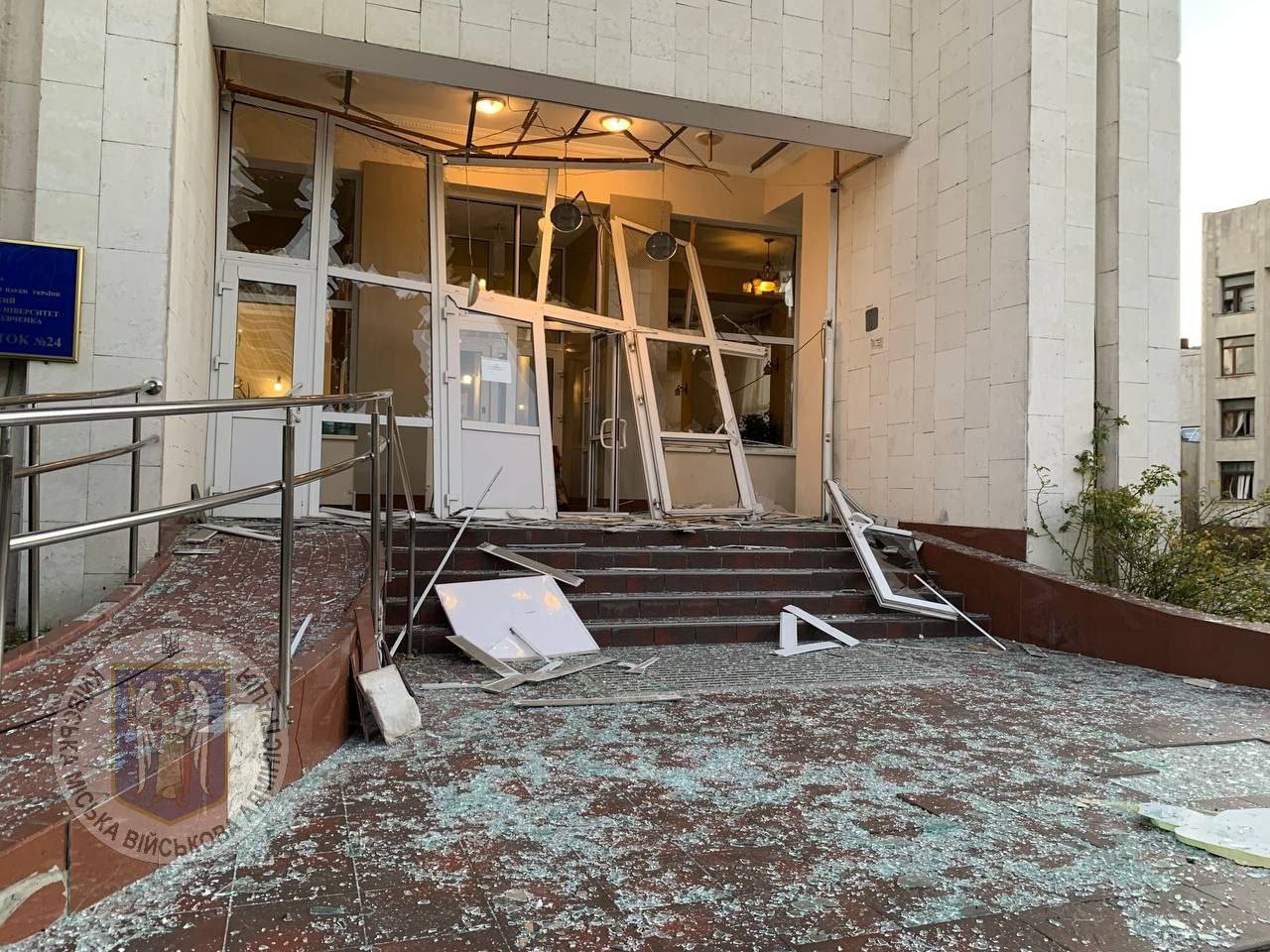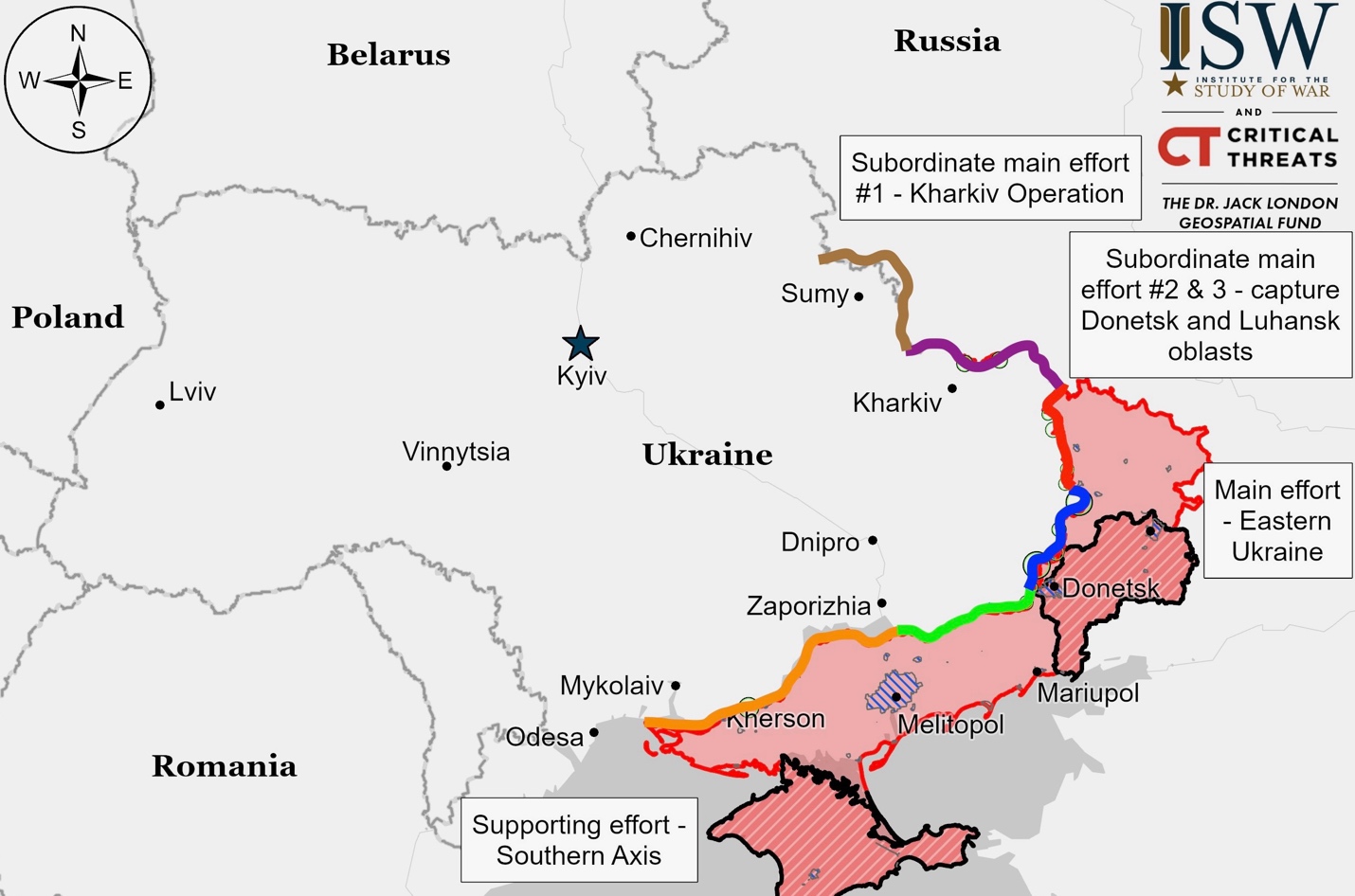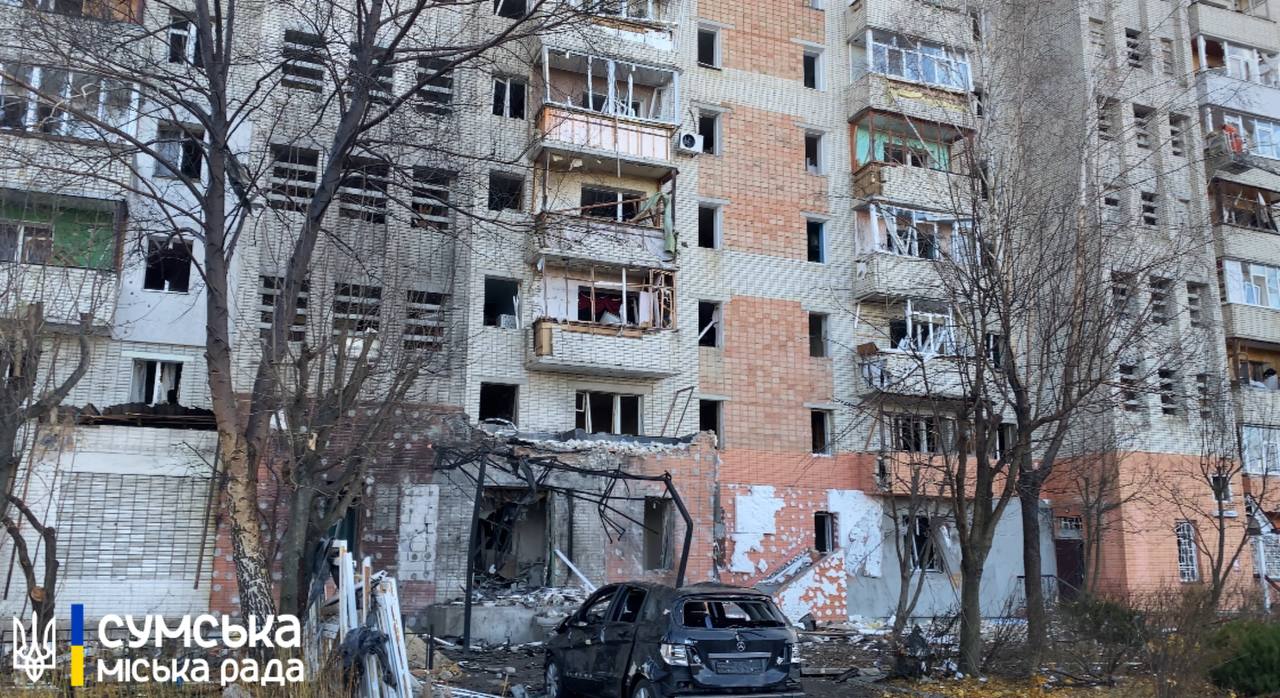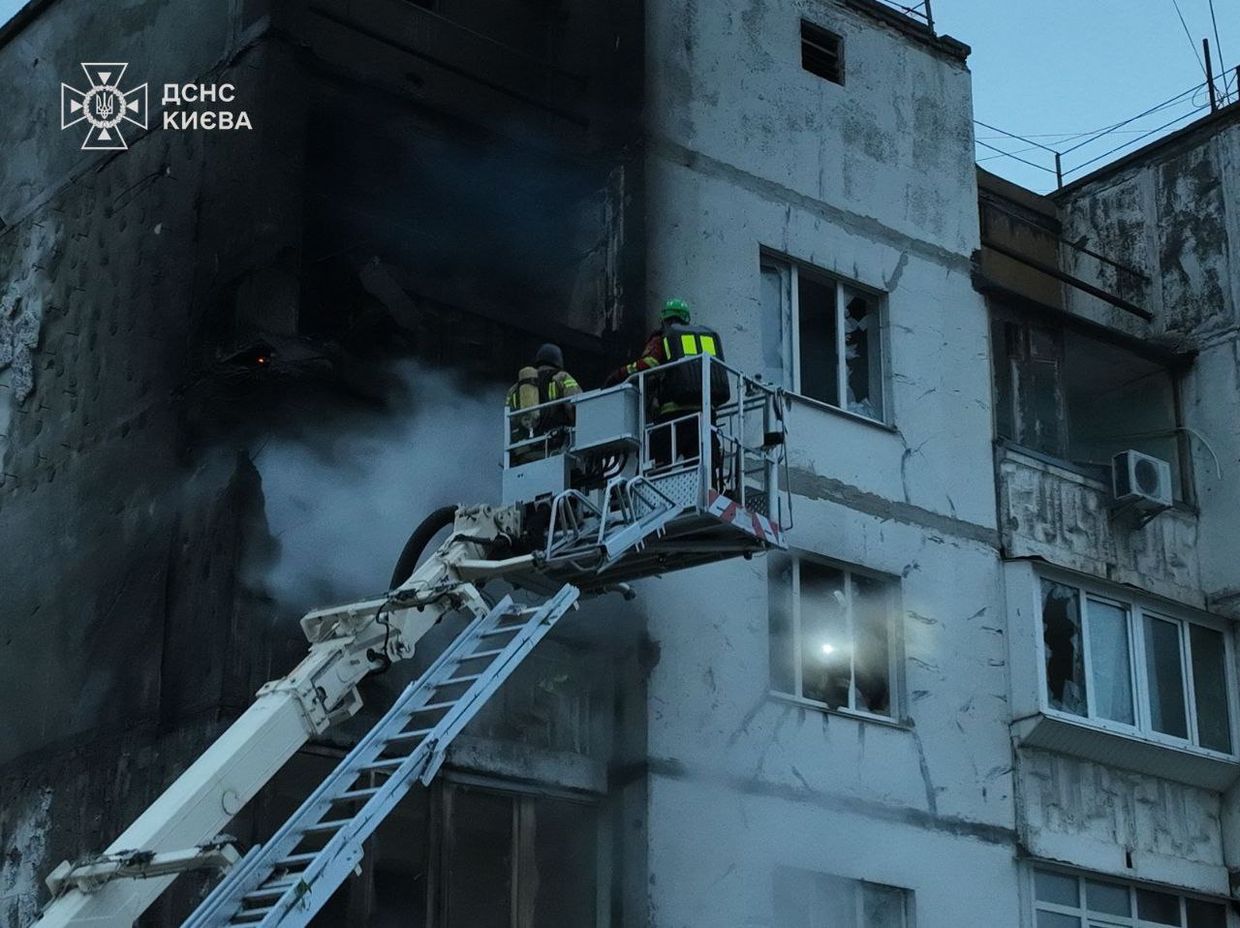Summary of the Day:
Ukrainian forces have conducted successful strikes against seven Russian radar and air defense systems since October 20, targeting key installations near Mospyne (southeast of Donetsk City), Cape Tarkhankut in Crimea, and Luhansk Oblast. Russian forces made marginal advances in two areas: north of Sudzha in Kursk Oblast and north of Kurakhove in Donetsk Oblast.
South Korea’s Foreign Minister Cho Tae-yul indicated possible increased support for Ukraine, including potential weapons shipments. This comes in response to Ukraine’s Military Intelligence report that Russia has deployed 7,000 additional North Korean troops near the Ukrainian border, equipping them with mortars, rifles, anti-tank missiles, and night vision equipment.
Russia’s internet regulator Roskomnadzor implemented new regulations requiring social media channels with over 10,000 subscribers to register with the government by January 2025. In a separate development, Chechen Republic Head Ramzan Kadyrov announced the rescission of his previous order that prohibited Akhmat Spetsnaz soldiers from taking Ukrainian prisoners of war.
Picture of the Day:
 Several buildings were damaged in Russia’s latest overnight drone strike on Ukraine, targeting the capital. (Kyiv City Military Administration / Telegram)
Several buildings were damaged in Russia’s latest overnight drone strike on Ukraine, targeting the capital. (Kyiv City Military Administration / Telegram)
Beyond Ukraine – The March Towards World War
The deployment of 12,000 North Korean troops to support Russia’s war in Ukraine marks a dangerous escalation in international conflict. This unprecedented military alliance between Russia and North Korea, apparently with China’s tacit approval, threatens to destabilize the existing world order. The partnership combines Russia’s military resources with North Korea’s troops and China’s economic support, creating a powerful anti-Western coalition. What began as a regional conflict in Ukraine is evolving into a broader international crisis, with nuclear-armed nations increasingly taking sides. The arrangement is particularly concerning as North Korea receives nuclear technology in exchange for its military support, potentially accelerating nuclear proliferation. The inability of Western nations to prevent this alliance, despite diplomatic pressure on China, demonstrates a shifting global power dynamic that could have lasting implications for international peace and security.
The discovery of new Russian-produced fake videos targeting the U.S. presidential election marks a dangerous escalation in international cyber warfare and threatens global stability. These sophisticated disinformation campaigns, confirmed by the FBI and U.S. intelligence agencies, demonstrate Russia’s continued efforts to undermine democratic processes in Western nations, potentially deepening diplomatic tensions between nuclear powers. With both Russia and Iran actively working to influence the November 5 election through false content, these actions risk further destabilizing already strained international relations and could weaken trust in democratic institutions worldwide. The use of artificial intelligence and sophisticated technology to create convincing fake videos represents a troubling new frontier in information warfare that could have far-reaching implications for future international conflicts and diplomatic relations.
Situation On The Land, Sea, and Air in Ukraine
After nearly 1,000 days of war in Ukraine, U.S. Defense Secretary Lloyd Austin states that Russian President Putin has failed to achieve his initial objectives, including the capture of Kyiv and full control of the Donbas region, with Russia suffering significant losses of reportedly 700,000 troops and $200 billion in resources. Currently, Russian forces are mounting unprecedented offensives across multiple fronts, with 126 separate clashes reported today alone marking some of the heaviest fighting of the conflict, particularly around Toretsk, Kurakhove, and Pokrovsk in Donetsk Oblast, while simultaneously launching major operations in Zaporizhzhia Oblast and attempting a significant push near the Oskil River toward Kupiansk in Kharkiv Oblast, where Ukrainian forces have secured Kruhlyakivka. The situation has become particularly critical as Russia plans to bolster its forces with over 7,000 North Korean troops near the Ukrainian border – an unprecedented development that prompted President Zelensky to strongly criticize Western allies for their inaction regarding North Korea’s involvement, emphasizing that access to long-range Western weapons could help counter these mounting threats, while Austin warns that Ukraine’s fall would threaten European security.
Ukraine’s military intelligence (HUR) reports that Russia has armed North Korean troops near the Ukrainian border with infantry weapons, including mortars, rifles, and anti-tank missiles. Approximately 7,000-8,000 North Korean troops are reportedly stationed in Russia’s Kursk Oblast, with a total of nearly 12,000 North Korean personnel sent to Russia, including 500 officers and three generals. While these troops are currently training in Russia’s Far East, Ukrainian intelligence officials express skepticism about their combat effectiveness, citing potential communication challenges between North Korean and Russian forces. This development coincides with increased Russian military activity in eastern Donetsk Oblast.
Chechen leader Ramzan Kadyrov announced he reversed his earlier October 29 order prohibiting his Akhmat Spetsnaz forces from taking Ukrainian prisoners of war, which he had issued following a drone strike on the Russian Spetsnaz University in Gudermes, Chechnya – an attack for which Kyiv has not claimed responsibility and which a Ukrainian intelligence source suggests may have originated from neighboring Dagestan or Ingushetia due to regional rivalries, despite Kadyrov’s claims that Ukrainian POWs were killed in the strike. The reversal came one day after the head of the Russian Orthodox Church, Patriarch Kirill, spoke out against growing brutality in the Russian military, occurring against a backdrop of documented Russian war crimes, with Ukraine having confirmed over 100 cases of POW executions since 2022.
Ukrainian forces have conducted successful strikes against seven Russian radar and air defense systems from October 20-21. The most recent attack occurred near Mospyne, southeast of Donetsk City, reportedly using ATACMS missiles. Other successful strikes were reported at Cape Tarkhankut in Crimea and in Luhansk Oblast. The attacks targeted various Russian defense systems, including Buk-M2, Buk-M3, and S-300/400 systems, as well as a “Podlet” radar station. These strikes could significantly impact Russia’s air defense capabilities, potentially limiting their ability to operate near the frontline and use glide bombs effectively, especially given Russia’s current difficulties in producing replacement systems due to Western sanctions.

Ukrainian Operations in the Russian Federation – Initiative None
Limited advances occurred near Sudzha in Kursk Oblast, with Ukrainian forces gaining ground in northern Pogrebki’s forested area while Russian forces moved south along Novoselovka Street in the same region. Russian military reported attacks near Darino, Leonidovo, Nikolayevo-Darino, Novoivanovka, and Plekhovo, with Ukrainian counterattacks noted near Novoivanovka and Kamyshevka. Russian airborne units, including the 137th Regiment, are active in the Korenevo area. No significant combat was reported in Glushkovsky Raion.
Ukrainian military spokesperson Vadym Mysnyk reported that Russia has amassed substantial forces and equipment in Kursk Oblast. Despite this buildup, Russian forces continue to rely on costly infantry attacks, launching assaults every 10-15 minutes in some areas of the Ukrainian salient. The current fair weather allows Russia to utilize its military equipment in the region.
Kharkiv Front – Initiative Russia
Russian forces conducted limited attacks near Vovchansk (northeast of Kharkiv City) and Hlyboke (north of Kharkiv City) but failed to gain ground. Russian sources reported their drone operators are targeting Ukrainian positions and trenches in the Kharkiv area to prepare for future infantry attacks.
Luhansk Front – Initiative Russia
Russian forces continued operations along the Kupyansk-Svatove-Kreminna line without confirmed advances, though Russia’s Defense Ministry claimed to have captured Pershotravneve near Svatove. Russian sources reported advances near Zahryzove, Vyshneve, Nevske, and Terny, but these claims lack visual confirmation. Combat continued in multiple areas including Petropavlivka, Pishchane, Kruhlyakivka, Kolisnynivka, Druzhelyubivka, Makiivka, Katerynivka, Hrekivka, Yampolivka, Torske, and the Serebryanske forest area.
Donetsk Front – Initiative Russia
Siversk
Russian forces conducted offensive operations near Siversk focusing on the areas around Bilohorivka (northeast) and Ivano-Darivka (southeast). No confirmed advances were reported. Russian military bloggers shared footage of what they claim shows a Kh-38 missile strike on a bridge near Zakitne, west of Siversk.
Chasiv Yar
Russian forces continued their offensive near Chasiv Yar, particularly south of the city toward Predtechyne and Stupochky. No confirmed changes to the frontline were reported.
Toretsk
Russian forces continued operations near Toretsk and its southwestern areas (toward Shcherbynivka and Sukha Balka). While a Russian military blogger claimed advances near Nelipivka, south of Toretsk, this remains unconfirmed. No confirmed frontline changes were reported.
Pokrovsk
Russian forces reportedly advanced southeast of Pokrovsk near Selydove. While Russian military bloggers claimed advances west of Selydove toward Novooleksiivka and Hryhorivka’s outskirts, these remain unverified. Russian forces conducted assaults across multiple locations: east of Pokrovsk (near Myrolyubivka, Promin, Myrnohrad, and Mykolaivka) and southeast of Pokrovsk (near Sukhyi Yar, Krutyi Yar, Lysivka, Novohrodivka, Selydove, Vyshneve, Hryhorivka, and Petrivka)
Kurakhove
Russian forces made slight advances north of Kurakhove with confirmed progress northwest of Voznesenka. While Russian sources claimed additional advances around Kurakhove (near Novoselydivka, Oleksandropil, Ostrivske, Illinka, Stepanivka, Maksymilyanivka, and Pobieda), most remain unconfirmed. The Russian Ministry of Defense reported capturing Kurakhivka northeast of Kurakhove. Russian forces conducted assaults in multiple areas: north of Kurakhove (near Sontsivka, Novodmytrivka, Voznesenka, Kreminna Balka, and Novoselydivka), northeast (near Hostre, Kurakhivka, Vovchenka, Illinka, and Ostrivske), east (near Maksymilyanivka), and southeast (toward Dalne).
Southwest of Donetsk City
Russian forces continued operations near Vuhledar on November 2 without confirmed frontline changes. Russian military bloggers claimed several unverified advances: the capture of Trudove and Yasna Polyana north of Vuhledar, a 1.8-kilometer advance near Novoukrainka, and approaches to Rozlyv and Maksymivka’s outskirts. Russian forces conducted assaults northwest of Vuhledar (near Yasna Polyana, Shakhtarske, and Maksymivka), north (near Trudove and toward Uspenivka), and northeast (near Kostyantynivka, Antonivka, and Katerynivka).
Zaporizhia Front – Initiative Russia
Zaporizhia-Donetsk Border Area
Both Russian and Ukrainian sources indicated no ground activity along the border area between Donetsk and Zaporizhia Oblasts.
Zaporizhia Line
Fighting continued near Robotyne in western Zaporizhia Oblast with clashes reported around Nesteryanka and Mala Tokmachka.
Kherson (Dnipro River) Front – Initiative Russia
Ukrainian officials reported ongoing Russian attacks along the Dnipro River in Kherson Oblast. A Russian source claimed that Ukrainian forces successfully struck Russian airborne units near Skadovsk using HIMARS, resulting in casualties.
Ukraine News
Overnight November 1 to 2, Russia launched a major aerial attack against Ukraine, deploying 71 drones and a cruise missile from Belgorod, Oryol, and Kursk regions. Ukrainian forces demonstrated effective defense by intercepting 39 drones over multiple regions and disrupting 21 more through electronic warfare, though Russian strikes still managed to hit Kharkiv City, injuring 40 people (including 30 police officers) at a police station, while drone attacks damaged residential areas in Kyiv and Sumy, and Russian sources claimed strikes on military targets near Odesa’s port.
In a subsequent overnight assault on November 3, Russia escalated with multiple waves of drone strikes against Kyiv in an attack lasting over five hours. I found myself in Kyiv sleeping on the bathroom floor of my hotel room to give me one more wall of protection. While Ukrainian air defenses intercepted all drones, falling debris sparked fires in the Holosiivskyi and Desnianskyi districts and caused damage in Shevchenkivskyi district, including broken windows in a dormitory, university, and office building. This followed a more severe strike the previous night that injured an 82-year-old woman and set fire to a 16-story residential building.
The broader context of these attacks was revealed by President Zelensky, who disclosed that Russia launched over 2,000 Shahed drones at Ukraine in October alone, representing more than 170,000 components that should have been blocked by sanctions, with over 6,130 Shahed drones used in 2024. Russia continues to acquire these components through shell companies and allies including China, Iran, and North Korea, prompting the U.S. to recently respond by sanctioning nearly 400 entities across 17 countries, including China, India, Malaysia, UAE, Thailand, and Turkey, and fine GlobalFoundries $500,000 for unauthorized chip shipments.
Ukraine’s human rights commissioner Dmytro Lubinets has called on Russia to provide a list of Ukrainian POWs available for exchange, responding to Russian claims that Ukraine is blocking prisoner swaps. While Russia claims it offered to release 935 POWs with Ukraine accepting only 279, Ukraine disputes this characterization. The last exchange in mid-October saw 95 prisoners returned to each side. Ukraine reports that Russian forces have executed at least 102 Ukrainian POWs since 2022, with documented evidence of torture and killings in captivity, including video footage of POWs being shot while surrendering.
Innocent Victims Of War
The casualty count of civilians in the past 24 hours: (Russian War Crimes)
DEATHS: 5 INJURIES: 79
Russian forces launched several devastating strikes in Kharkiv region on Sunday. Two S-400 missiles struck a police station in Kharkiv city, killing police officer Andrii Matvienko and injuring 46 people, including 36 police officers and a rescuer. The attack also damaged 20 residential buildings and critical infrastructure. In a separate strike on Kupiansk, a residential building was hit, wounding three civilians including two elderly women. The attacks caused significant damage to local heating and water networks and destroyed 19 vehicles.
Russian forces hit a residential building in Sumy with a drone strike, leaving eight people injured.
Russian attacks in Donetsk Oblast killed four civilians in the settlements of Sukhi Yaly, Yurivka, and Chasiv Yar, with four others wounded.
Russian forces attacked 15 settlements across Kherson Oblast, including the city of Kherson, resulting in seven civilian injuries.
Russian forces struck near Dnipro city in Dnipropetrovsk Oblast, injuring eight people, including two children. An 8-year-old girl suffered facial shrapnel wounds and a 15-year-old boy received leg injuries. An 83-year-old woman was seriously wounded. Both children are in stable condition at the hospital. The attack also damaged local infrastructure.
Russian forces launched a major drone attack on Kyiv overnight. The assault caused a fire in a 16-story residential building in the Sviatoshynskyi district, damaging multiple apartments on the upper floors. An 82-year-old woman suffered head injuries from shrapnel and was hospitalized. Eighteen residents were evacuated from the building. The attack also injured a policeman and left another elderly woman in shock. The air raid lasted over 5 hours before the 50-square-meter fire was extinguished.
 The aftermath of a Russian drone attack on the city of Sumy, Ukraine. (Sumy City Council)
The aftermath of a Russian drone attack on the city of Sumy, Ukraine. (Sumy City Council)
 Russia attacked Kyiv with drones overnight, injuring one person and damaging an apartment building in the Sviatoshynskyi district. (State Emergency Service / Telegram)
Russia attacked Kyiv with drones overnight, injuring one person and damaging an apartment building in the Sviatoshynskyi district. (State Emergency Service / Telegram)
Ukrainian Mobilization and Industrial Defense Base
Ukraine’s defense industry has partnered with Thales Belgium to jointly produce anti-drone missiles, a crucial development as Russia launched a record-breaking 2,000 strike drones against Ukraine in October alone – 700 more than September’s previous record. The cooperation, announced by Strategic Industries Minister Herman Smetanin, will include technology transfer and missile component production. This partnership with Thales, the world’s only complete rocket system manufacturer, comes at a critical time as Russia has shifted its strategy from cruise and ballistic missiles to increased drone warfare, threatening Ukraine’s critical infrastructure.
Ukraine’s Allies
South Korea’s Foreign Minister Cho Tae-yul indicated that his country might increase support for Ukraine, including possible weapons shipments, in response to North Korean troop deployments near Ukraine. According to Ukraine’s Military Intelligence, Russia has recently moved 7,000 additional North Korean soldiers to areas near the Ukrainian border, equipping them with various weapons including mortars, rifles, anti-tank missiles, and night vision equipment. South Korea’s decision will be influenced by monitoring North Korea’s involvement and the benefits it receives from Russia.
Poland’s Foreign Minister Radoslaw Sikorski has proposed a “defense loan” that would allow Ukraine to purchase weapons from Polish factories on credit, with repayment due after Ukraine’s reconstruction. While defending Poland’s status as one of Ukraine’s strongest allies since Russia’s full-scale invasion began in February 2022, Sikorski responded to criticism from President Volodymyr Zelensky about MiG-29 jet deliveries by noting that Poland has provided more support than any other nation. Despite strong overall support, including military aid and refugee assistance, some tensions exist between the two countries over historical issues.
Australia is providing Ukraine with Joint Direct Attack Munition Extended-Range (JDAM-ER) glide bomb kits, retired from their Air Force service. These kits convert regular bombs into GPS-guided weapons with a 72-kilometer range. This delivery is part of Australia’s broader support for Ukraine, which includes a recent $168 million military aid package and plans to donate 49 Abrams tanks. Since Russia’s invasion, Australia has provided over $1 billion in total aid to Ukraine, with $866 million specifically for military assistance. The timing of the JDAM-ER delivery hasn’t been confirmed by Kyiv, and Ukraine has already been using similar U.S.-made systems since February 2023 to counter Russian aerial attacks.
Russian War Losses (Today/Total)
| Troops +1410
699090 |
Tanks +12
9182 |
Artillery +10
20086 |
Arm. VEH +36
18523 |
Aircraft
369 |
Heli
329 |
Ships
28 |
Russian Mobilization and Defense Industrial Base
The Kremlin is expanding military influence in government through its “Time of Heroes” veteran program, as demonstrated by the November 1 appointment of program participant Sergei Zhigalkin to Deputy Minister of Digital and Technological Development in Sakhalin Oblast.
Russia’s Allies
Belarus President Alexander Lukashenko reaffirmed that his country will not join Russia’s war in Ukraine.
Controlling the Narrative and Russian Propaganda
Russia’s internet regulator, Roskomnadzor, launched a new policy requiring social media channels with over 10,000 subscribers to register with the government by January 2025. Channel operators must reveal their personal information or face advertising restrictions and limits on content sharing. While protests from Russian military bloggers led to minor adjustments in the policy, the core requirement for identification remains in place.
Source Material
Institute for the Study of War – understandingwar.org
The Kyiv Independent – kyivindependent.com
Kyiv Post – kyivpost.com
